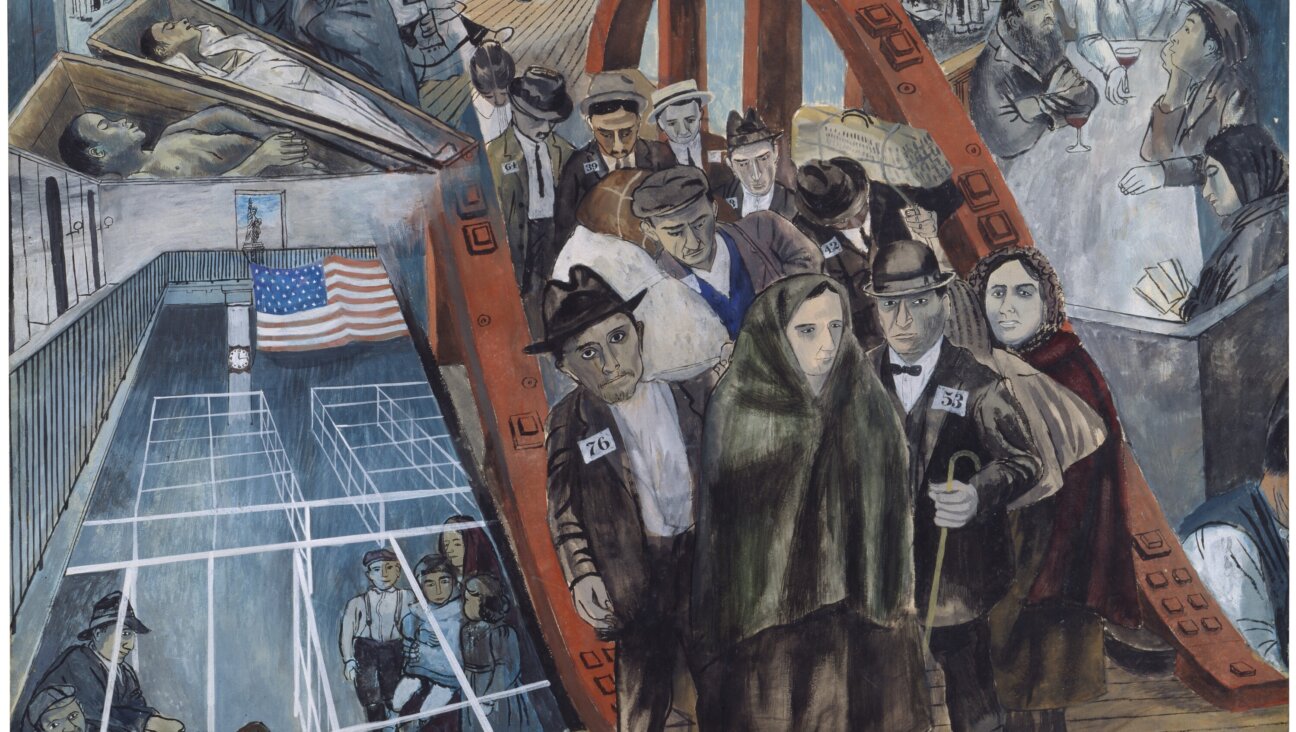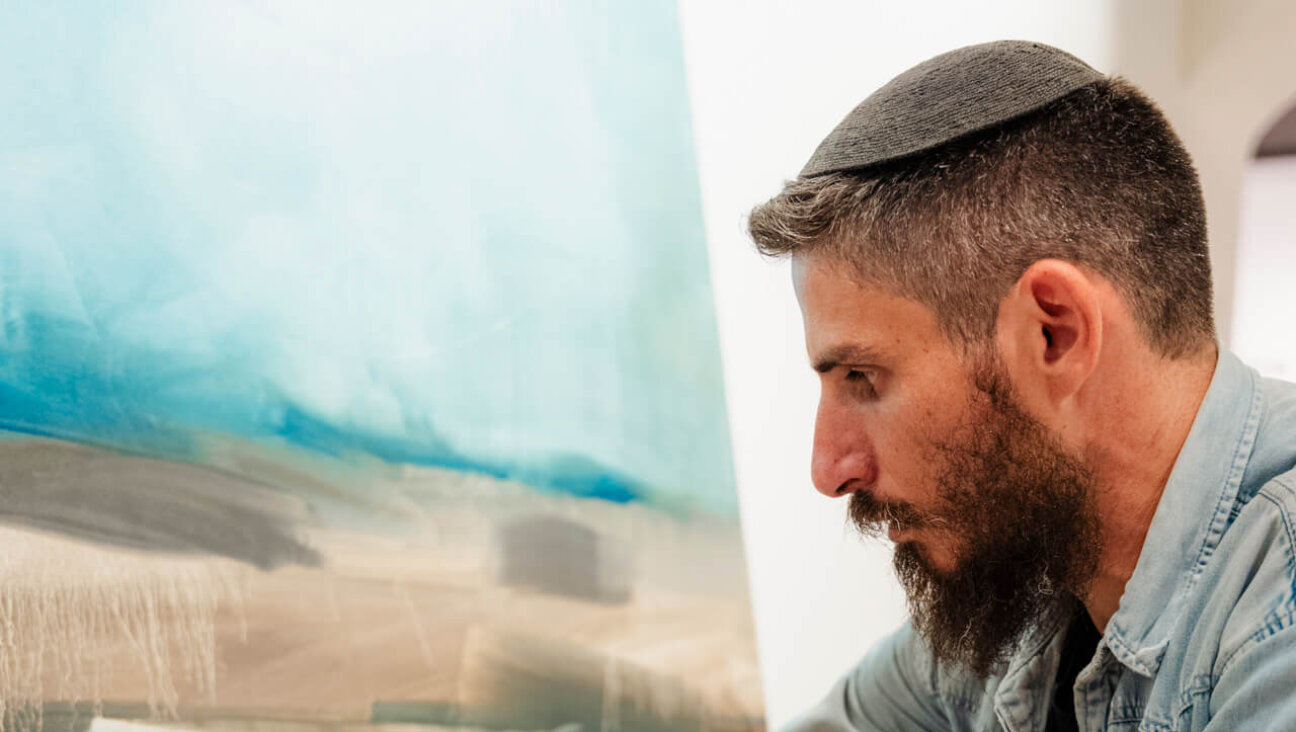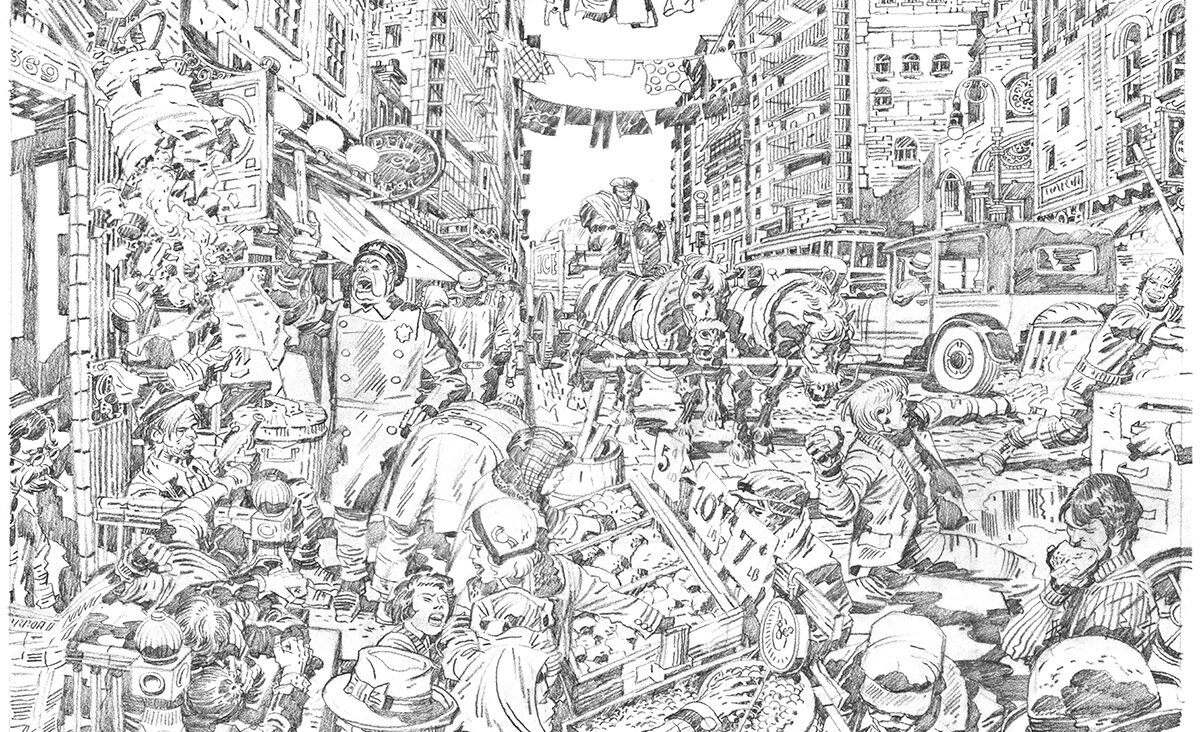‘Blue Like Me’: Indian-Jewish roots explored in artist’s latest books

Graphic by Angelie Zaslavsky
Siona Benjamin was raised Jewish in India’s Hindu and Muslim society where she attended Catholic and Zoroastrian schools. A two-time Fulbright scholar, author and book illustrator, she now lives in America where she creates art that explores her identity and transcultural issues.
Benjamin’s work is inspired by styles of Indian and Persian miniature painting, Christian and Jewish illuminated manuscripts, contemporary pop culture, and Jewish and Indian myths. She mainly uses gouache and 22k gold leaf, as well as acrylic and mixed media. Her most recent Fulbright Fellowship work, “From Motherland to Fatherland: Transcultural Indian Jews in Israel,” consists of 3-D lenticular prints of layered multi-generational portraits of Indian Jews in Israel.
Her paintings are known for their blue-skinned characters. She sees them as an extension of self-portraiture, taking on multiple roles and forms to recreate ancient and current dilemmas.
Other recent projects include a children’s book, “I Am Hava: A Song’s Story of Love, Hope & Joy” and a chapter in “Growing up Jewish in India: Synagogues, Customs, and Communities from the Bene Israel to the Art of Siona Benjamin”, edited by scholar Ori Z Soltes.

Siona Benjamin with one of her paintings of a blue-skinned woman in a tallit. Courtesy of Siona Benjamin
“Siona Benjamin’s work weaves together an extraordinary array of stylistic threads – from Persian, Mogul, and Hindu miniatures to Amar Chitra comic books and Bollywood posters, and from Byzantine icons and kabbalistic imagery to American Pop art,” Soltes wrote to the Forward. “These threads reflect both the diverse worlds of which she has always been a part and her interest in using art as a transnational, intercultural, multi-religious instrument of tikkun olam.”
Benjamin spoke about her work with Forward contributing writer Anna Correa. Their conversation has been edited for brevity and clarity.
Your first series was called “Finding Home.” Why is that search important?
The “Finding Home” series is important because I’m Indian. I’m Jewish. I am now American. My family’s a little bit in India, most of them are in Israel. So I question: What is home? It’s a difficult and very complex question for people who come from multiple identities.
Do you think it’s important for Indian Jews to visit India or have some type of connection?
It’s very important. My daughter visited India several times throughout her childhood. And I think that has prompted her many questions and her quest for what she’s seeking right now. It was kind of ingrained in her. It was the seed that was already in her, like the seed that was already in me. When I was in India, I didn’t realize it. And then I came here, I was thinking, “What do I do with all these multiple identities, like baggage?” But then I realized this baggage can be interesting baggage, it can be opened up and it can be used in a way where it is not a burden, but a celebration.
Do you think your art is a form of Tikkun Olam, or a way to help others?
Absolutely. I feel like art can be a vehicle to do the work of Tikkun, to be able to raise important questions and try to answer them. Many years back when I was searching for what to say and how to say it in my artmaking process, understanding the concept of Tikkun helped me find direction, meaning, and hope in my work. It is very universal. It opens up avenues to all kinds of people and things. And so yeah, it is definitely my little drop of contribution.
In your chapter in “Growing Up In India,” you discuss how your professors gave you some difficulties for wanting to do Indian art miniatures. Did they only see Western art as having value?
Correct. At that time, in the ’80s, I was taught that Western art is a higher art, and that Indian art is more craft-oriented or more traditional. My undergraduate professors in India, being experts in Impressionist art and doing amazing Impressionist-style portraits and paintings, were walking around like Indian versions of Monet and Manet. When I started to show interest in Indian miniature painting, they said, “This is tourist art” – meaning what tourists come to India wanting, a little souvenir of Indian miniature painting.
I think now that there were some contemporary Indian artists that made an impression on me, like Manjit Bawa, Amrita Sher-Gil, and Sayed Haider Raza, for example, who were using tradition in their work, whether it’s illuminated manuscripts, traditional Tantric Art or Indian miniature painting. They influenced my formative years in India.
In the “Finding Home” series, you use pop art.
I was surrounded by pop culture because I grew up in Mumbai and because of Bollywood. I also grew up with Indian comic books, which are called Amar Chitra Katha. They’re amazing Indian mythology stories, all in English. I grew up with a wide array of stories from different religions reading these Indian comic books.
I learned about pop artists like Roy Lichtenstein in India and here in America. His paintings are of this blond, blue-eyed woman sinking in the water asking someone named Brad for help. It’s a little bit sexist, you know; a white male point of view, like she’s lost and asks Brad for help while she sinks in the water or whatever.
If you look at the “Finding Home” series, I have in one of the paintings a woman praying and saying, “You must save us from their wrath.” Behind her is Roy Lichtenstein’s “Blam!” So the whole story changes. Here’s this blue-skinned woman of color, asking to be saved from “their” wrath. Who is them? Who is us? The explosion behind her could signify India-Pakistan problems, Israel-Palestine, any kind of war; making it a universal story of fighting for justice and ending war and violence.
You depict the women as blue-skinned, yet you describe them as women of color. Why blue? That’s the one color that human beings are not.
I thought about Lichtenstein’s blonde, blue-eyed women and thought, “What if I convert them to blue-skinned?” You know, women that represent characters like Lilith in the Torah, or like Tamar or Miriam. And I made them blue-skinned, which is the color of the sky and the ocean. So they belong everywhere and nowhere.
Do you see yourself as blue?
I’ve been blue since the 90s.





















